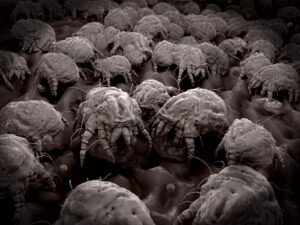How To Clean House Of Mites
How do I clean my house of mites?
There are several steps you can take to get rid of mites in your home:
- Vacuum thoroughly: Mites can be found in carpets, upholstery, and other fabrics. Use a vacuum with a HEPA filter to remove mites and their eggs from these surfaces.
- Wash bedding and other fabric items: Mites can live in bedding, towels, and other fabric items. Wash these items in hot water (at least 130 degrees Fahrenheit) to kill mites.
- Use a damp cloth to dust: Damp dusting can help to pick up mites and their eggs, rather than just stirring them up into the air.
- Use an air purifier: An air purifier can help to remove mites and other allergens from the air.
- Keep the humidity low: Mites thrive in humid environments. Use a dehumidifier to keep the humidity in your home below 50%.
- Repair any water damage: Mites can often be found in damp or water-damaged areas. Repair any water damage and fix any leaks to reduce the number of mites in your home.

What kind of mites are in houses?
There are several types of mites that can be found in homes. Some common types of mites found in homes include:
- Dust mites: These mites are commonly found in bedding, upholstery, and carpets. They feed on shed skin cells and are a common cause of allergies.
- Spider mites: These mites are small arachnids that feed on plants. They can sometimes be found in homes where there are houseplants.
- Storage mites: These mites can be found in stored grains and other dried foods. They can also be found in bird and rodent nests.
- Chigger mites: These mites are found in grassy areas and can sometimes be brought into homes on clothing. They can cause skin irritation and allergic reactions.
- Scabies mites: These mites are parasitic and can cause an itchy rash on the skin. They are most commonly transmitted through close physical contact with an infected person.
- Demodex mites: These mites are found on the skin of humans and animals and are usually harmless. However, an overpopulation of these mites can lead to skin irritation and infections.
How small are mites?
There are several factors that can attract mites to a home:
- Warmth and humidity: Mites thrive in warm, humid environments, so homes that are too hot or too humid may be more attractive to mites.
- Food sources: Mites can be attracted to food sources, such as grains, nuts, and other stored foods. They can also be attracted to plants, especially if the plants are stressed or have a pest infestation.
- Presence of other pests: Mites can be attracted to homes where there are other pests, such as rodents or insects, as these pests can provide a food source for the mites.
- Clutter: Mites can hide in clutter, such as piles of paper or clothes, making it easier for them to thrive in a home.
- Poor cleaning habits: Homes that are not regularly cleaned or well-maintained may be more attractive to mites, as they can find plenty of places to hide and access to food and water sources.
- Water damage: Mites can be attracted to damp or water-damaged areas, as they need moisture to survive.
